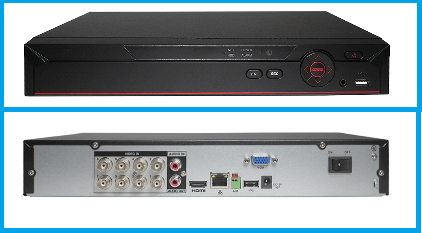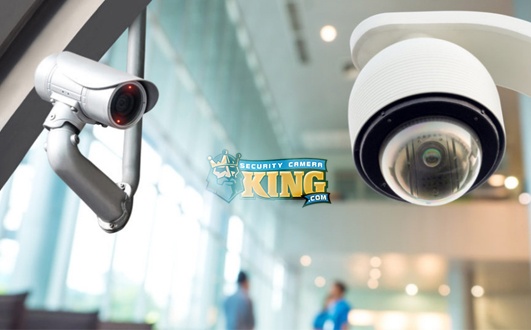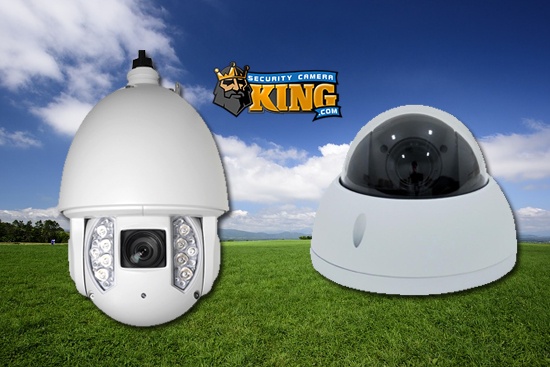COAX CCTV Technologies
Many people ask us at Security Camera King if COAX CCTV Technologies are still viable, and if so, what options they have for a modern system. Well, we are here to tell you that not only are COAX CCTV Technologies still viable, but they are more powerful tools than ever. The technology for COAX has not stagnated and all, and has done a great job for the most part keeping up with IP camera counterparts. So firstly, what makes a COAX CCTV system “COAX”? The first thing we’ll talk about is DVRs.
Firstly, know that DVRs have been around longer than NVRs, and have been regularly available for commercial and residential use since about 1999. DVR stands for Digital Video Recorder. A DVR is a device that can digitally capture, encode, and store video data from a source other than itself called an ‘external source’. DVRs are used for multiple purposes, as you know they are used in CCTV for security cameras just about everywhere. They have also been used commonly for in-home Television applications. You may even have a DVR at home from your cable company that’s used for recording live TV shows that you might otherwise have missed.
In the CCTV industry, however, DVRs are used to capture the incoming video signal from security cameras. The types of security cameras that connect to DVRs are not IP, they don’t have ethernet cable connections to a PC network, nor use IP addresses. These cameras use a Coaxial -or COAX- cable that is connected to the ports on the back of the DVR. This is able to then transmit video data to the Recorder. This is why we call DVR and HD over Analog Cameras “COAX CCTV Technologies”.
The signal transmitted to the DVR for a long time was analog. However with the advent of AHD, and other digital video transmission protocols is now technically a digital signal that is simply being transmitted using coax cable. When DVR systems used analog signals only, the picture quality options were rather limited In fact the highest resolution available for a long time on COAX systems was 480p, not even a full megapixel. The DVR has a computer processor capable of capturing, encoding, and compress, and store the incoming video signal to make better use of space. This space is located on as many Hard Drives as are installed in the DVR. The user can then poll this video data later to be viewed, or exported.

COAX CCTV Technologies
Most Modern DVRs are hybrid systems capable of using more than one digital or analog video signal type. Additionally, DVRs can usually add a certain number of IP cameras over the network- but how many cameras and which channels depend on the model of DVR. Many CCTV installations that are currently existing, are older and therefore already COAX-based. This means installing a newer DVR at these locations might be more cost-effective than installing an IP camera system, which leads us right into our next topic- affordability vs gain.
IP cameras hit high resolutions such as 4k first, but COAX has now caught up. COAXC Cameras and DVRs can now accept 4k cameras too, leading to COAX systems with incredible video technology. So what about affordability? Well, in general, COAX systems are substantially less expensive than IP systems. Much of this has to do with the tech involved, every IP camera is its own computer with the ability to un many advanced AI features and processes its own outgoing video data. They also possess networking features that allow for direct access, and for many this level of control and features are critical to an advanced operation. However, the vast majority of existing CCTV systems currently installed are COAX, and their uses do not need much more than content reliable recording they can access remotely from time to time.
COAX CCTV Technologies to have the ability to do motion detection, IVS, remote viewing, and hit super-high resolutions, all using existing COAXZ cabling installed on site. That’s right if you have an existing CCTV system, even an older one, the cable is likely still viable if you upgrade. This one key fact is so crucial to cost-saving that many users elect to upgrade from COAX to COAX rather than IP just because of the massive savings in cable and labor for installation.
COAX systems now feature the following:
- 2, 4, and 8 Megapixel (4k) Cameras Capable
- DVR now Capable of using IP cameras too
- Capable of Remote Viewing via PC and Smartphone, as well as system alerts
- Capable of Motion Detection
- Capable of IVS tripwire and intrusion
- PTZ camera capable
- and MUCH more
So to sum it up DVRs and coax cameras are actually super viable for more cost-effective solutions- Particularly locations that may already have previous installations. They still have their place in the CCTV world. For more questions dont hesitate to call, or talk to a sales pro at 561 288 5258!
Until Next time, Have a Great one, and stay safe!
Related: What’s the difference between H264 and H265?
Related: IP PTZ Security Cameras – All There is to Know
Related: Resolution, and why does it matter?
Related: What are active deterrence cameras?
Find Us On: Facebook | Twitter | YouTube












